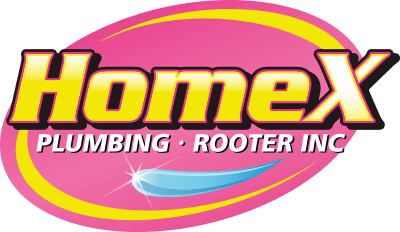Natural gas is a great alternative energy source because it’s clean, cheap and abundant. But there are some things you should be aware of before switching your home and appliances over to gas. Installing a gas line is no easy task and should be done by a professional. If gas piping is installed improperly it could lead to health and fire hazards.
Everything You Need to Know About Gas Line Installation
According to the Department of Energy and Environmental Protection (PURA), “Natural gas has a flammability range of approximately 5-15%. That means that any mixture containing less than 5% or greater than 15% natural gas to air would not support combustion. Natural gas, when mixed with air and exposed to an ignition source, is combustible.” Hence why installing a gas pipe is not considered a do-it-yourself project.
Because natural gas is odorless and otherwise undetectable to the human nose, natural gas companies intentionally add mercaptan to their product. Mercaptan, also known as methanethiol, is a foul-smelling odorant that acts as an additional safety measure so that homeowners and business owners can detect a dangerous gas leak should it occur.
Installing a gas line has little margin for error, even if it is considered a fairly straightforward plumbing and electrical project. Here is everything you need to know about gas line installation and if it is a good fit for your home and needs.
Supply, Branch, Drop Lines, Risers
The gas supply line is what carries natural gas into your home with branch lines running to individual appliances throughout your home or business. The branch line will end in a drop line where a vertical pipe drops downward to an appliance’s overhead branch line. If the line carries gas up to an appliance it is called a riser.
Dirt Pocket, Drip Leg, Sediment Trap
The sediment trap or dirt pocket is a design element that prevents any water or debris from getting into your appliances. It has an extra 3-inch long pipe extension for catching loose sediments. These traps operate and are dependent on gravity that forces any solids or liquids down into the trap.
Pipe Downstream
The gas company is responsible for the piping upstream of the gas meter, while the homeowner takes care of everything downstream.
Gas Piping Materials
Copper, galvanized steel, corrugated stainless steel tubing, and brass are all common gas piping materials used in homes. But it’s important to know what is allowed by local utility companies in your area. When you go to install a gas line on your property, your plumber will advise you on what are best practices based on your location.
Connectors
- Flex Connectors: The future is here, and it’s flexible! In some regions, flexible connectors are used to connect appliances with gas piping. There has got to be an accessible shut-off valve at the connection point. This allows for more convenience for the homeowner.
- Three or Six-Foot-Long Accessible Connectors: These flexible connectors are used for gas ranges and clothes dryers. They cannot go through walls, floors or ceilings, but they can be longer than 3 feet (unless the local code requires otherwise). Some jurisdictions allow flexible couplings in residential settings while others don’t, so make sure you know what’s allowed before purchasing!
Thread Seal Tape
Thread seal tape, often incorrectly called Teflon® Tape is not recommended when connecting steel gas pipes. Oils that are left over on the gas pipe threads from the manufacturer can prevent this type of tape from sealing properly and result in gas leaks. It is advised you check with the gas utility and a licensed plumber to know what is the best thread seal tape you should use on the type of gas piping you have decided to install.
Contact HomeX for Anaheim Natural Gas Line Installation
If you need a gas line repair or installation performed in Anaheim, CA, you can trust the team from HomeX Plumbing & Rooter. Our company is ready to help with gas line jobs of any size or scope in this Orange County city. We’re committed to excellence and focused on exceeding the expectations of our customers. With our skills, we can handle all of the details of any gas line installation or repair in Anaheim, California.





